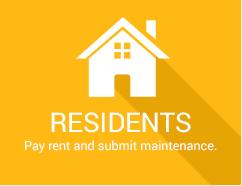Denver Rental Management Fire Recovery
When there’s fire damage at a property it’s a very emotional experience for both the tenant as well as the owner. As an owner this might happen once or twice in a lifetime. As a tenant, they can lose personal possessions and be displaced for several weeks. This report will focus on what happens after the fire department has left. There are several steps necessary to work through on the road to recovery and restoration of the property.
Key Topics
Step 1: Secure the property
The house must be secured to keep the curious and looters out. Usually, this means boarding up windows, securing doors, covering fire, and firefighting holes in the walls and roof. Protecting the house from the weather is also important. Rain, snow and freezing weather can make matters worse. In freezing weather it may be necessary to drain all plumbing. Normally, the first-response restoration contractor can secure the house removing water and seriously damaged materials, drying the house and contents and removing smoke residue.
Step 2: Call an insurance professional
The next step is to make some phone calls — first, and most important, to an insurance professional or company. Major insurance companies have 24-hour hotlines and will generally treat the problem promptly. Be sure to ask the insurance company to recommend at least three fire restoration companies. Choose one to start the immediate work. These companies are very familiar working with insurance companies on all matters of restoration.
Few people know exactly what their insurance policies cover. Work with the insurance company agent or representative to find out what is covered, what is not covered and what may be subject to further discussion. They will assess the scope, breadth and depth of the damage and provide estimates of the repairs according to industry-accepted standards. Get all this in writing as soon as possible, because it will influence what work is done immediately and what can be put off until later. Filling out all the forms is a top priority. The restoration contractor can help to complete them.
Be sure to document any disputed items or classes of items that are supposedly not covered. There are arbitration processes that can be used to get a final determination (short of going to court) of what is actually covered. In general, insurance companies want to find a fair and reasonable scope of needed repairs to bring the property back to the condition before the event.
Step 3: Call the company that holds your mortgage
The homeowner should also call the financial institution that holds the mortgage. Fire lowers the value of the property and affects the mortgage. Properly restoring the house will restore its value, but keep the mortgage company involved.
Step 4: The environmental phase for personal protection
A fire-damaged house can be very dangerous. It may be structurally unsound. If it is, the fire department will not allow people on the site. Contact the fire department to learn about conditions of access. The fire department may allow a qualified restoration contractor into the house. It may also be necessary to contact the police as well, if they are involved in an arson investigation.
After the fire is out the house may still have dangerous chemicals produced by the fire or from fighting the fire. The house will be dark, probably wet and likely already be growing mold. If the house was built before 1980 there could be issues around asbestos. Any ‘Hot’ areas where there is contamination will be sealed off and abatement will be the next phase to properly clean up the area and dispose of any contaminated items.
Floors can be slippery and there may be sharp and jagged items lying around. If access is granted to go back in the house, wear safety boots, a hard hat, and protection for lungs and eyes. The fire department and restoration contractor can recommend proper safety gear. Don’t go into the house alone. Investigate in teams of at least two, one of whom is a professional. Once the house is cleaned up and people are allowed on the premises it’s now time for the actual construction phase to begin.
Step 5: The restoration phase
The fire-involved homeowner is, ultimately in charge of the remediation. Although sometimes it seems that the insurance company is driving the process, it is important that progress is monitored closely in the restoration and meticulous notes are kept to document any problems, It’s important the owner be available to all the involved parties 24 hours a day, to be kept informed of critical steps and decisions.
As stages of the restoration are completed to satisfaction, the owner will be expected to sign off on the work. If some work isn’t done well enough, note it on the document during the sign off, and request that a holdback be kept to ensure that the work is done well enough later on. Remember to be reasonable and sign off as soon as possible.
It may be necessary to obtain extra financing to complete all the work that should be done. Check with the mortgage company or financial institution to make sure that the money will be there if needed. A little preplanning can save a lot of stress. That’s important after a fire.
Restoration work may also be a good time to upgrade the property. If the upgrades are really needed or highly desirable and are affordable, seriously consider doing them during the restoration or immediately after restoration. Remember that there may be financial support for energy upgrades, which can provide some tax relief or money back.
Step 6: Paying the bills
Restoring a property after a fire can be a complex process involving many subcontractors and complex bill of materials and other fees and permits. The good news is most of all the financial matters will be handled directly between the contractor and insurance company. That is why selecting the right restoration contractor is so important at the beginning of this process. Make sure the contractor has a good history of working with the insurance carrier. The better they work together the easier and quicker the property can be restored to rental condition.
For more information on this and other topics, please visit us online: http://echo-summit.com/education
If you prefer to watch a video on this topic, visit us at: http://echo-summit.com/education/videos








